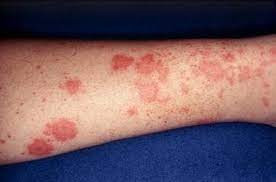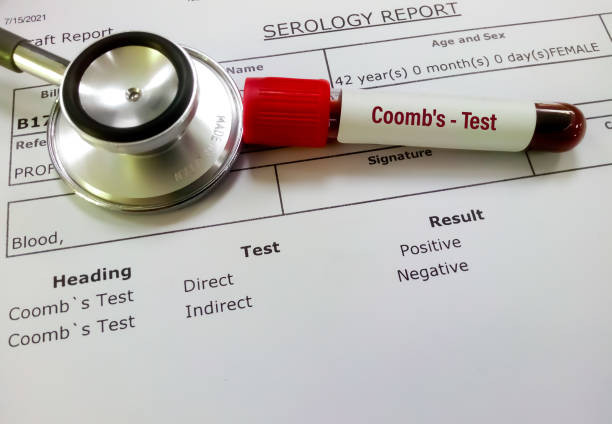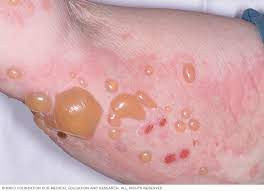Definition
Cryoglobulinemia is a form of vasculitis, a group of disorders characterized by inflammation of blood vessels, which can impede blood flow and damage organs and important tissues. In cryoglobulinemia, abnormal blood proteins called cryoglobulins clot together at cold temperatures, typically below 37 degrees Celsius. These gel-like proteins can freeze, impeding blood circulation and damaging the skin, joints, nerves, and organs, particularly the kidneys. Though less common, this condition can also affect the heart, brain, and gastrointestinal tract.
Read more: Vaskulitis - Definition, Causes, Symptoms, and Management
Causes
The exact cause of cryoglobulinemia is not fully understood. It is classified as an autoimmune disease, where the body's immune system malfunctions and attacks healthy tissues. Factors that can trigger inflammation include genetic predisposition, medications, infections, viruses, and environmental pollutants.
Cryoglobulinemia is associated with various conditions, including:
- Infections: Hepatitis C is the most commonly associated infection with cryoglobulinemia, accounting for over 90% of cases. Other infections linked to cryoglobulinemia include hepatitis B, HIV, Epstein-Barr virus, toxoplasmosis, and malaria.
- Certain cancers: Some blood cancers, such as multiple myeloma, Waldenstrom's macroglobulinemia, and chronic lymphocytic leukemia, can occasionally lead to cryoglobulinemia.
- Autoimmune disorders: Diseases like lupus, rheumatoid arthritis, and Sjogren's syndrome increase the risk of developing cryoglobulinemia.
Read more: Multiple Myeloma - Definition, Causes, Symptoms, and Management
Risk factor
Cryoglobulinemia is considered a rare disease. While cryoglobulins have been detected in some healthy individuals, the true number of affected individuals remains unknown. However, the prevalence is estimated to be approximately 1 per 100,000 people worldwide.
Risk factors for cryoglobulinemia may include:
- Gender: Cryoglobulinemia is more commonly diagnosed in women than in men.
- Age: Symptoms of cryoglobulinemia typically manifest in middle age, usually above the age of 50.
- Other diseases: Cryoglobulinemia is often associated with several underlying conditions, such as hepatitis C, HIV, multiple myeloma, Waldenstrom's macroglobulinemia, lupus, and Sjogren's syndrome.
Internationally, the prevalence of cryoglobulinemia varies depending on the incidence of hepatitis C infections in different regions.
Symptoms
People with cryoglobulinemia may or may not experience symptoms. Some individuals may not exhibit any signs except for an elevated level of cryoglobulins detected in blood tests.
When symptoms do occur, they often appear intermittently and can vary depending on the affected organ system. These symptoms may include:
- Skin lesions: Characterized by skin rashes with red spots or purplish discoloration due to bleeding under the skin (purpura). The purplish color often appears on the legs. Additionally, some individuals may experience hives, open sores (ulcers), and tissue death (necrosis).
- Joint pain: Symptoms resembling rheumatoid arthritis are common in cryoglobulinemia.
- Muscle pain and weakness.
- Peripheral neuropathy: Cryoglobulinemia can damage nerves in the fingertips and toes, leading to numbness, tingling, and/or a burning sensation.
- Severe fatigue.
- Changes in skin color on the hands in response to cold temperatures.
- Enlarged lymph nodes.
- Abdominal pain.
- Kidney damage: Individuals may experience kidney damage without any noticeable symptoms, so routine urine testing is recommended for those with any form of vasculitis.
When cryoglobulinemia affects the brain, individuals may experience headaches or strokes. Involvement of the heart can lead to chest pain and heart failure, which is characterized by difficulty breathing and swelling in the legs.
Read more: Peripheral Neuropathy - Definition, Causes, Symptoms, and Management
Diagnosis
To diagnose cryoglobulinemia, a doctor will consider several factors, including a detailed medical history, physical examination, laboratory tests, specialized radiological examinations, and, if necessary, a biopsy of affected tissues or organs. Specific blood tests to detect cryoglobulins in the blood and determine their type will likely be performed. Proper handling of blood samples is crucial to ensure accurate test results.
Everyone diagnosed with cryoglobulinemia should be screened for hepatitis C infection, as it is commonly associated with the condition.
In addition to blood tests, the following diagnostic tests may also be conducted:
- Urinalysis: To check for blood in the urine, indicating possible kidney involvement.
- Radiological examination: This may include a chest X-ray, lung CT scan, and MRA, CTA, or angiogram to assess blood vessels or arteries, as needed.
- Nerve conduction tests: Electromyography (EMG) of the arms and legs may be performed to evaluate nerve function.
- Biopsy: Surgical removal of blood vessels or affected organ tissue for microscopic examination in a laboratory. Biopsies of bone marrow, skin, liver, or kidneys may be performed depending on the underlying disease.
Management
The therapy for cryoglobulinemia is tailored to the affected organ, the severity of symptoms, and the underlying condition. Addressing the underlying condition often leads to improvement in cryoglobulinemia symptoms. In mild cases, doctors may recommend avoiding cold temperatures and managing pain with over-the-counter pain relievers, along with regular monitoring of the disease.
For moderate to severe cases, therapy may involve:
- Antiviral drugs: Typically prescribed for individuals with hepatitis C infection if identified as the cause of cryoglobulinemia. Referral to a hepatology specialist may be necessary for further management.
- Immunosuppressive drugs: These are the mainstay of therapy for severe cases where vital organs are affected. Corticosteroids, such as prednisone, and immunosuppressants, such as azathioprine and cyclophosphamide, are commonly used.
- Biologic drug rituximab: This is a common therapy choice for cryoglobulinemia. Rituximab targets specific parts of the immune system to control inflammation. However, further research is needed to determine its long-term safety and effectiveness.
- Plasmapheresis: This procedure is an option for individuals with life-threatening or organ-threatening cryoglobulinemia. It involves filtering cryoglobulin clots from the blood plasma to prevent them from clogging blood vessels and interfering with blood flow to organs.
It's crucial for individuals with cryoglobulinemia to avoid cold exposure, especially on the fingers and toes. Protective measures such as wearing gloves when exposed to freezers or refrigerators are recommended. Daily foot checks for injuries are also important, as cryoglobulinemia can impede wound healing.
Complications
If left untreated, cryoglobulinemia can result in permanent tissue and organ damage, underscoring the importance of seeking prompt medical attention when symptoms arise. Additionally, recurrences can occur, highlighting the necessity for regular monitoring.
Prevention
While there are no known methods to prevent cryoglobulinemia, certain steps can be taken to reduce the risk of developing symptoms:
- Avoiding cold temperatures can help prevent the onset of certain symptoms associated with cryoglobulinemia.
- Screening for and treating hepatitis C infection can help lower your risk of developing cryoglobulinemia.
When to see a doctor?
Contact your doctor if:
- You experience symptoms of cryoglobulinemia.
- You have hepatitis C and experience symptoms of cryoglobulinemia.
- You have cryoglobulinemia and experience new symptoms or worsening symptoms.
Looking for more information about other diseases? Click here!
- dr. Monica Salim
Cryoglobulinemia (2022) Mayo Clinic. Mayo Foundation for Medical Education and Research. Available at: https://www.mayoclinic.org/diseases-conditions/cryoglobulinemia/symptoms-causes/syc-20371244 (Accessed: March 28, 2023).
Cryoglobulinemia (2023) Vasculitis Foundation. Available at: https://www.vasculitisfoundation.org/education/forms/cryoglobulinemia/#1545061788247-e1aef7c8-97b2 (Accessed: March 28, 2023).
Cryoglobulinemia: Medlineplus medical encyclopedia (2021) MedlinePlus. U.S. National Library of Medicine. Available at: https://medlineplus.gov/ency/article/000540.htm (Accessed: March 28, 2023).











